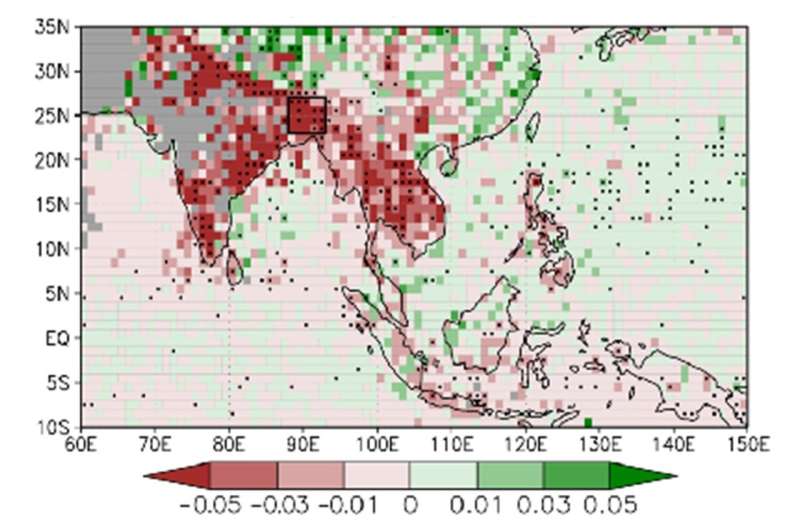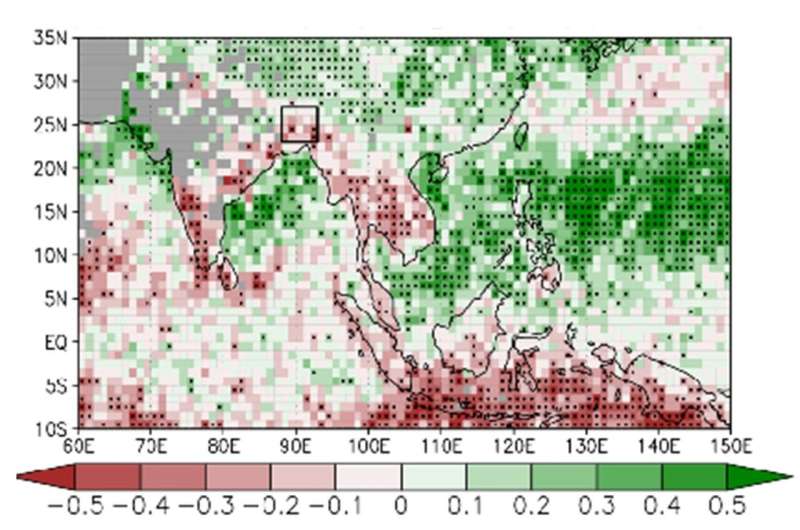This article has been reviewed according to Science X's editorial process and policies. Editors have highlighted the following attributes while ensuring the content's credibility:
fact-checked
trusted source
proofread
Scientists zoom in on the Asian monsoon season using satellite data

Scientists from Tokyo Metropolitan University and other institutes have studied new satellite data showing the diameter of rain droplets and the distribution of heavy ice in the atmosphere worldwide. They focused on the Asian monsoon region, finding larger droplets and more heavy ice precipitation on land before the actual monsoon season. Their findings shed new light on the features of the pre-monsoon season, such as more intense precipitation and lightning, potentially informing better weather prediction.
As adverse rainfall events rock the world, scientists are trying to understand the mechanism behind precipitation based on finer details than simply "how much" it rained. Recently, information has become available through the Global Precipitation Measurement Mission Core Observatory, a satellite which houses, among other things, a Dual-Frequency Precipitation Radar (DPR), a radar platform that yields information on the "microphysical" properties of rain around the world.
Amazingly, this includes the mean size of rain droplets and whether it is hail or graupel (soft hail), both on land and out at sea. In a research scene dominated by a focus on rain volumes, it remains to be seen what such properties can tell us about precipitation around the world.
A team including Drs. Moeka Yamaji and Hiroshi Takahashi (Tokyo Metropolitan University) has been studying the Asian monsoon season using newly available data from the DPR. In previous work, they found that the pre-monsoon season on land in Asia actually saw significantly heavier rainfall than the monsoon region, i.e., there was less rainfall in total, but the rain that did fall fell in stronger outbursts.
Shifting their attention to finer properties, they have now shown that rain droplets over land during the pre-monsoon season were larger, and there was an elevated amount of heavy ice precipitation. This agreed well with seasonal changes in "top heights," the altitude at which precipitation originates. The new study is published in the Journal of the Atmospheric Sciences.

Importantly, their analysis revealed that the correlation between the amount of rainfall and the size of droplets was not simple. Periods were found with similar total rainfall but different droplet diameters, showing how important it is to recognize different precipitation characteristics. They were also able to support previous findings on the nature of the pre-monsoon season.
For example, it was known that there was a considerable amount of damage from lightning and tornadoes before and after the monsoon season; the team have now been able to correlate this with a similarly double-peaked trend in heavy ice precipitation, giving new insights into the mechanism behind both.
The team's findings provide a fresh perspective on the inner workings of the Asian monsoon season, a devastating seasonal event with the potential to evolve under the influence of climate change. They hope that mechanistic clues like these might help improve weather prediction and mitigate damage during adverse climate events.
More information: Moeka Yamaji et al, Seasonal Differences of Precipitation and Microphysical Characteristics over the Asian Monsoon Region Using Spaceborne Dual-Frequency Precipitation Radar, Journal of the Atmospheric Sciences (2023). DOI: 10.1175/JAS-D-22-0198.1
Provided by Tokyo Metropolitan University



















